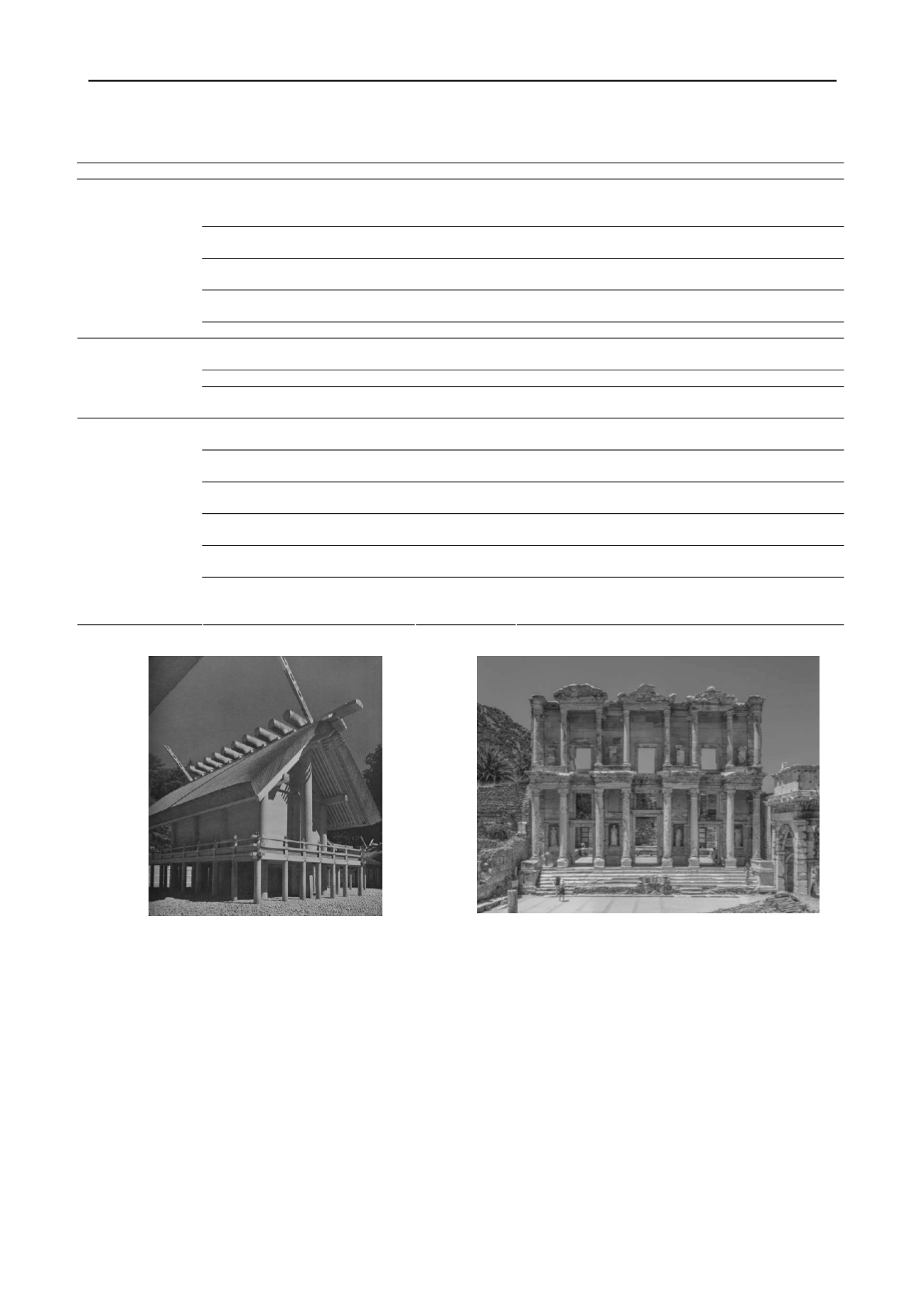
3088
Proceedings of the 18
th
International Conference on Soil Mechanics and Geotechnical Engineering, Paris 2013
Table 1. List of papers belonging to the session on the Case Studies, Monuments and Historic Sites.
Category
Authors
Country
Title
Akazawa Y.
et al.
Japan
Reconstitution of foundation platform of Prasat Suor
Prat by compaction of original soil with slaked lime,
Angkor Ruins, Cambodia
Iwasaki Y.
et al.
Japan,
Kazakhstan Authenticity of Foundations for Heritage Structures
Mimura M. and Yoshimura M.
Japan
Geotechnical Assessment for the Restoration of
Garandoya tumulus with the Naked Stone Chamber
Sesov V.
et al.
Macedonia Geotechnical aspects in sustainable protection of
cultural and historical monuments
Preservation of
Monuments and
Historic Sites
Valore C. and Ziccarelli M.
Italy
The preservation of Agrigento Cathedral
Hawkins A.B. and St John T.W.
England
Importance of understanding the development and
significance of sulphates in the London Clay
Puppala A.J.
et al.
USA
Heaving Mechanisms in High Sulfate Soils
Case Studies: soil
characterization
Vasquez A.
et al.
Chile
Geotechnical characteristics of glacial soil deposits at
Punta Arenas in Chilean Patagonia
Hofman R.
et al.
Austria,
Germany
Rockfall-protection embankments – design concept and
construction details
Fedorovsky V.
et al.
Russia
Geotechnical aspects of design and construction of the
mountain cluster Olympic facilities in Sochi
Petrukhin V.P.
et al.
Russia
Geotechnical features of Sochi Olympic facilities
project designs
Slyusarenko Y.
et al.
Ukraine
Modern methods of geotechnical defence of buildings
in the difficult geological conditions of Ukraine
Usmanov R.A.
et al.
Tajikistan
Geotechnical problems at development of territories in
the conditions of the Republic of Tajikistan
Case Studies:
geotechnical
design
Zhussupbekov A.Z.
et al.
USA,
Kazakhstan,
India
Geotechnical issues of megaprojects on problematic
soil ground of Kazakhstan
Figure 1. Ise shrine, which undergoes ritual reconstruction every 20
years ever since the 7
th
century.
substituting spoiled or damaged parts. Later on, all the Shinto
shrines but one (Ise shrine, Figure 1) stopped the periodic
reconstruction because of political and economic changes.
Nowadays, while the Ise shrine still keeps its ritual
reconstruction every 20 years, all the other shrines are protected
by law as architectural heritage, assuming as an indicator of
their relevance the material value. In fact, the interruption of the
rebuilding process was an accident and not the norm, the Iso
shrine being the only one to follow its originally conceived life
cycle. So, the question is: what is authentic in this case? The
frozen material situation of the 19
th
century or the immaterial
heritage preserved by the ritual reconstruction of the Ise shrine?
Out of such a peculiar case, the preservation of authenticity
usually asks to avoid reconstruction of monuments, which as
Figure 2. The façade of the library of Celsus in Ephesus (Turkey), a
magnificent example of
anastylosis
.
explicitly stated by the Venice Charter “should be ruled out a
priori”. Only
anastylosis
(meaning in Ancient Greek “to erect a
structure again”), that is to say, the reassembling of existing but
dismembered parts can be permitted (Venice Charter, article
15). However, it can be done only when possible without
misinterpreting the original structural scheme (Figure 2).
If static problems univocally indicate that interventions are
necessary, clearly recognizable additions of new materials or
elements should be preferred, which may eventually contribute
to a long lasting life of the monument.
Nice examples can be found in the past, as shown by the
Royal Palace of Napoli (Figure 3), whose façade may appear
homogeneous but underwent a number of modifications in a
period of about three centuries, some of which were caused by
static problems, or in the present, as shown for instance by the


